Embedding Diversity 2016 - 2022 Report

Table of contents Introduction 1 Workforce diversity Governance Communications The Creative Lives Approach Embedding diversity 2 5 7 10 11
I’m in awe of the organisationdistance travelled - what you’ve done - genuine want to understand, make a difference, change.
Creative Lives Trustee
Creative Lives (formerly known as Voluntary Arts) is a registered charity that was established in 1991. We champion community and volunteer-led creative activity, and work to improve opportunities for everyone to be creative. In particular, we celebrate and promote people expressing themselves creatively with others. The benefits that this brings are vast, ranging from fostering a sense of pride in the place they live to developing their confidence to have a voice in the welfare and well-being of themselves and others.
INTRODUCTION
By 2014 the organisation had become increasingly concerned about the relative lack of diversity within its staffing, governance and beneficiaries. In particular Creative Lives identified in its Strategic Plan 2014-17 “an immediate and pressing challenge to reach out effectively to creative cultural activity in black, Asian and minority ethnic cultures and communities."
Despite making a commitment to address this issue, very little action was being taken to rectify the situation because the organisation appeared to be held back by a nervousness at causing offence coupled with an ease with doing what it has always done. It was effective, expanding its reach but had no expertise for engaging with racially diverse communities. Creative Lives finally broke out of the cycle of inactivity and fear with a combination of strong leadership, developing partnerships, asking questions and investing in expert support.
In 2015-16 we established a national Black, Asian and Minority Ethnic Advisory Panel. This panel undertook a major programme of consultative conversations and relationship building with people involved in creative activities in diverse ethnic communities across the UK and Ireland.
The experience moved Creative Lives, in a short space of time, from a position of embarrassment about its lack of ethnic diversity to a confidence that it was pioneering an effective new approach for organisations that were in a similar position. Following the completion of the Advisory Panel’s work, all its members subsequently joined the Creative Lives Board of Trustees – and Creative Lives went on to win the Board Diversity &
Inclusivity award at the 2017 Charity Governance Awards. The full story of this process is told in our report ‘Open Conversations’
That first step allowed Creative Lives to break its cycle of inactivity and unintentional exclusion. However, we were clear in 2016 that this was still only the start of our journey. We said then that it was important to embed our new inclusive ways of working within the organisation and to integrate this agenda into the ongoing work of Creative Lives. This report looks at the extent to which we have achieved that aim, by examining what we did next from 2016-22.
1
Assembling the Advisory Panel in 2015-16 was a specific piece of work to get the organisation over a hurdle. The next stage in this kind of process is always the most difficult. Quite often an organisation will plan the first bit but not the second or third phase. We had our big bang but the test was going to be sustaining what was there and moving on with visibility. The success of the Open Conversations programme gave us the confidence to develop further projects into the fabric of its operations by targeting ethnic minority communities:
EEMBEDDING DIVERSITY
In 2018, Creative Lives ran Windrush anniversary projects in Liverpool and London as part of its partnerships with BBC Radio Merseyside and BBC Radio London.

Ethnic diversity was a particular target for our Off the Shelf project in Wales in 2019, which reached 1000 participants. One third of whom came from Black, Asian and minority ethnic communities, working with refugees and asylum seekers in Cardiff.
Our Unearthing Creativity project is now providing an additional focus on ethnic minority communities in Wales, working with artists Naz Syed and Marion Cheung.
Our exhibition and short film, A Creative Century reached out to a diverse range of people in Scotland in 2019.
While our projects have been very successful, we appreciated that it would be vital to mainstream and embed our approach to diversity within the culture of the organisation. From a systemic perspective, change takes time and challenges ourselves to do more, and constantly ask “what next?”, avoids the danger of languishing in self-congratulation that some kind of action has happened.
The #LoveToDraw Ireland project targeted refugee and asylum seeker communities in Ireland in 2020.
To change our culture we have had to be open to criticism, willing to adjust and to change, without taking it personally. In particular the diverse lived experience (of our Trustees, staff and external stakeholders) has been a massive influence on the organisation.
2
Picture from Creative Lives Awards 2021 ceremony (credit: Tom Wren)
Creative Lives has tried to be forward thinking, proactive and inclusive and to embed this as a natural part of our work. Rather than having a single diversity officer responsible for implementing policy we are trying to involve all members of the organisation in the process of learning and doing. We revise our policies regularly through a consultative process involving staff and Trustees to try to ensure they are living documents.
As we have built our confidence and practice, we have attempted to maintain three key principles:
continuously reviewing seeking external input constantly challenging
The purpose of our organisation is to champion community and volunteer-led creative activity and to support the people who take part or would like to take part. To do this effectively we need to reach a diverse audience. Bringing the Advisory Panel members onto the Creative Lives Board secured the legacy from our Open Conversations programme. But having a diverse Board is only meaningful if it is reflective of the people you are trying to reach.
It has been evident from our awards ceremonies, Zoom meetings and other activities that we increased the diversity of our audience – slowly and gradually – from 201622. We are now getting a more diverse range of applications for the Creative Lives Awards. The word is out there that Creative Lives is embracing diversity and has a supportive and constructive culture.
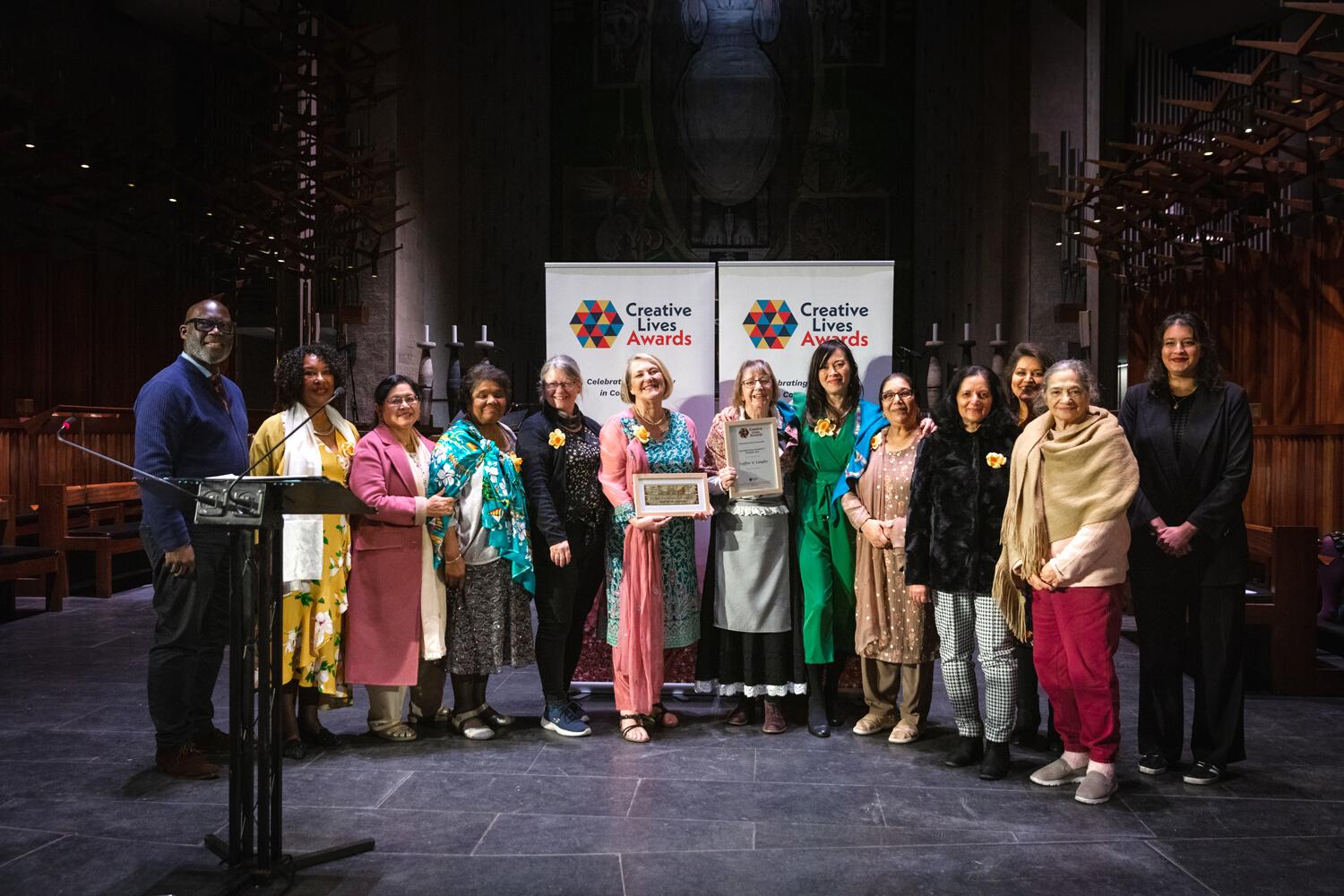
We used the occasion of our 30th anniversary in June 2021 to change our name to Creative Lives, to reflect the evolution of our work and our vision for the future. It also helps us explain the organisation more easily to people who have not previously connected with it. We believe this practical and symbolic change has further helped us to diversify the people engaging with the organisation. It signalled a refresh and increased confidence.
We are aware that by focussing on ethnic diversity we are building our confidence and knowledge to connect with other marginalised groups. For example, we definitely have work to do to engage more disabled people –and we are aware it will be important for our increasing work in Ireland to engage the Travelling Community.
3
Picture from Creative Lives Awards 2021 ceremony: David Bryan CBE and Coffee n Laughs group members (credit: Tom Wren)
Our work on embracing ethnic diversity needs to respond to the changing global context. The murder of George Floyd in May 2020 changed anti-racism globally and a big cultural movement has emerged from Black Lives Matter. There is a need to recognise and understand the huge impact on cultural heritage of colonialisation and empire and to look at migration and how cultures are being incorporated into UK heritage. Creative Lives is exploring anti racism training for staff and Trustees. We feel we have made slow progress but we are getting there. We are trying hard to be inclusive and to build on the learning from our own Open Conversations programme: it’s not all about audience development - it’s about going and talking to people, connecting lived experiences and creating safe inclusive spaces for conversation. We feel we have made slow progress but we are getting there. We are trying hard to be inclusive and to build on the learning from our own Open Conversations programme: it’s not all about audience development, it’s about going and talking to people, connecting lived experiences and creating safe inclusive spaces for conversation.
There was a lot going on and it was not tokenism. There are different layers to diversity and inclusion in the Board. It is important to see people from different backgrounds and perspectives. Helps with understanding. Breath of fresh air at Creative Lives Board meetings.
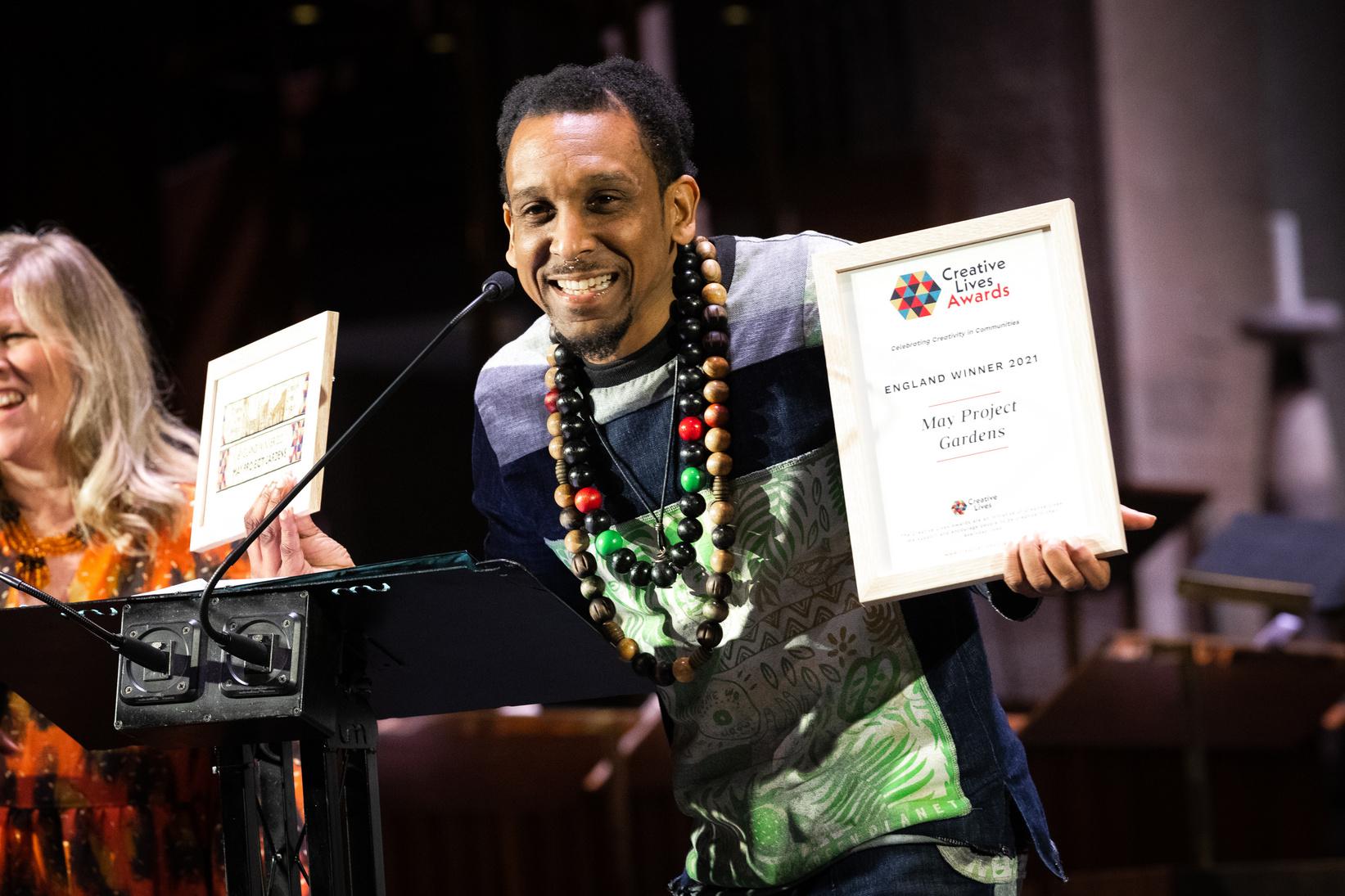
4
On joining Creative Lives, I really appreciated the diversity on the Board - in terms of ethnicity but also gender balance, geographical distribution etc.
Creative Lives Trustee
Picture from Creative Lives Awards 2021 ceremony: Ian Solomon-Kawall from May Project Gardens (credit: Tom Wren)
WHaving a truly diverse Board, 50% of our Trustees are people of colour, this appears to have made a significant difference to our staff recruitment. Almost immediately after the diversification of our Board in 2016 we started to attract more diverse applicants for jobs and we have appointed several people of colour. In interviews some candidates told us explicitly that looking up the Board members listed on our website, and seeing that our Chair was a person of colour, had influenced their decision to apply to work for us.
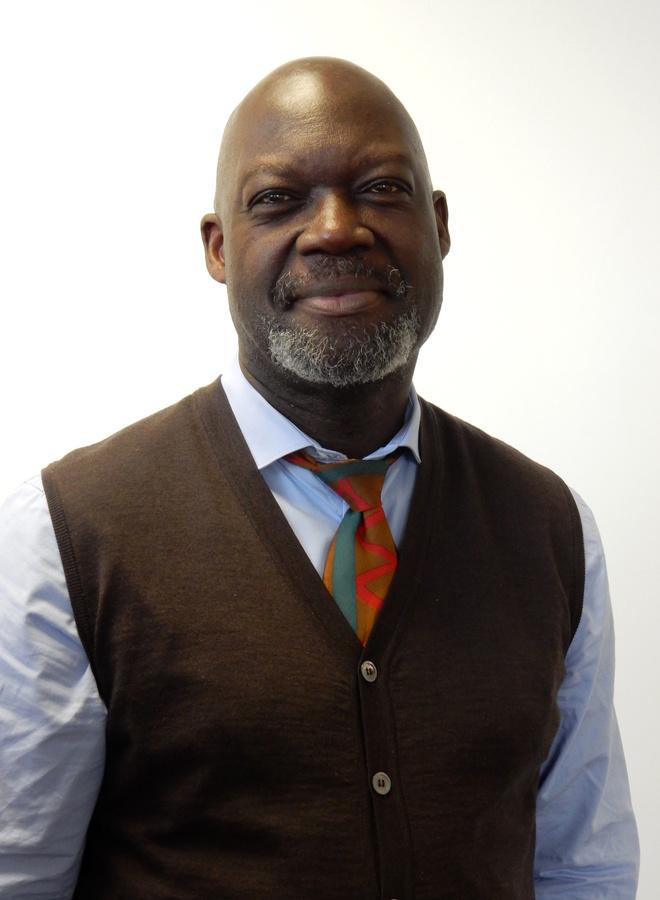
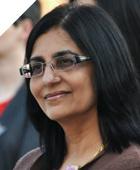

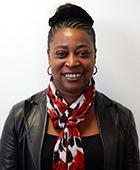

WORKFORCE DIVERSITY
We have tried some of the quick fixes (e.g. specialised agencies) that claim to get job adverts to a diverse range of people but these didn’t really work for us. Rather, we have found that you need to change who you work with as an organisation over time. Diversifying the stakeholders and experts supporting the organisation is nearly as important as trustees and staff.

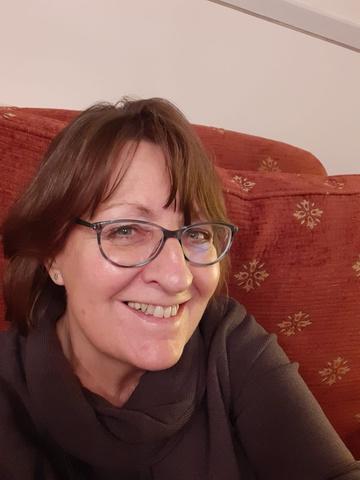

Since 2016 we have seen slow incremental behind-the-scenes changes coming through in our recruitment and our workforce has definitely become more diverse. But we still face two challenges in this area.
Firstly the significant increase in the diversity of applicants for paid positions within the organisation is not translating into as many diverse appointments as we had hoped. We now believe that the rigorous best practice approach we take to recruitment (including the removal of personal information from applications before shortlisting and the careful scoring of applications against the person specification) is still not securing more diverse applicants.
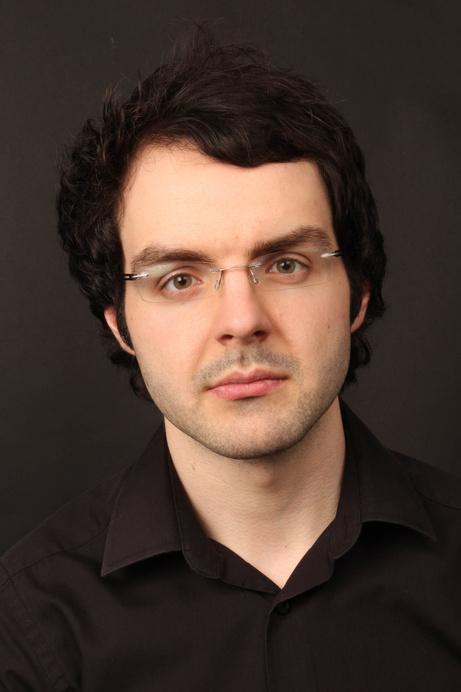
5
When I came in I could see diversity in terms of board membership. This is still unusual in the world I work in: I don’t see that visibility in other boards, and I don’t feel the benefit of that in other boards.
explain how to apply and what we are looking for. These refinements will benefit all applicants.
The second remaining challenge is that those diverse staff we have recruited have tended to be in relatively junior, part-time and/or short-term posts. It has proved harder to recruit more diverse candidates to full-time, senior positions. It is possible this reflects the lack of diversity in the wider sector workforce, meaning there are fewer experienced diverse candidates for senior jobs. We are looking at training and development opportunities, including pathways to help people learn and management skills building.
We are also focussing on how we could specify senior roles in a more flexible way, to allow for a wider variety of approaches to how each job could be effectively delivered.
Over the last two years we have committed resources to specific attempts to bring people of colour into our senior staff team
We are therefore looking at the way in which we construct job descriptions and person specifications to value a wider range of previous experience and different ways of approaching the work. This, we believe, will assist us in identifying talent that may not get opportunities but has the required skills. We are also reviewing our interview process (including the size of interview panels) and experimenting with an online drop-in Q&A session for potential applicants, to help
We are questioning our previous practice of filling some vacancies through sideways moves and promotions for people within the organisation, which clearly represents a missed opportunity for someone from outside it. But we are also aware that staff who join us in more junior roles need to be helped to progress up the ladder, particularly those from more diverse backgrounds. There are particular challenges around the retention of young people. The lack of experienced diverse candidates means that many of the people of colour we have employed have been at the start of their careers and have not stayed very long in the organisation.
– through an attempted secondment from a diverse-led organisation to provide maternity cover for one of our national Director roles, and through the recruitment of a new Community Engagement Officer post specifically designed to work with Black, Indigenous and people of colour community-led creatives. Unfortunately we were not able to find the right fit for the secondment but the Community Engagement Officer role is going very well.
Overall, although we are still dissatisfied with our progress in diversifying the Creative Lives workforce, statistically we have already made a step change that would be the envy of many much larger organisations. There is more to do and we acknowledge that, but we are making important continuous steps towards being the best we can be.
4
Creative Lives Trustee
Since the completion of the work of our Black, Asian and minority ethnic Advisory Panel in 2016 all the members of the Panel went on to serve as Trustees on the Creative Lives Board – some members joining the Board immediately and the others over the following years. David Bryan, Chair of the Advisory Panel, was appointed Chair of Creative Lives in November 2017.
GGOVERNANCE
Currently 50% of the Creative Lives Board members are people of colour, including the Chair and Vice Chair and 80% of these Board members are women.

The past six years have shown us the many benefits of having a diverse Board, including the quality and nature of our Board discussions, unique insights, layers of interpretation and the absence of groupthink, different networks, expertise and political insights.
The Board is still not as representative as we would like in relation to disability and we are aware we also need to look at intersectionality and greater engagement of other communities. We need to listen to younger voices: we should look for lived experience rather than years of board experience to develop more diversity across the generations in our governance.
Our experience over recent years has reinforced the benefit of having a reasonable balance of diverse skillset and lived experience on the Board: Trustees need to bring social capital and particular expertise.
It was great to have the continuity provided by Advisory Panel members joining the Board. David Bryan becoming Chair was a big step forward: his leadership, profile, connections, standing and expertise have been incredibly significant.
7
Picture of Catherine Mugonyi (Creative Lives Trustee)
When we established the Advisory Panel it was evident that many of its members were used to being the lone voice championing diversity and were presumed experts – in their jobs or in other volunteer roles. One of the benefits of joining the Advisory Panel was that it provided peer support and a safe space for people who were exhausted from often having to be the sole ‘diversity representative’. We were keen to continue that sense of a safe space within the Creative Lives Board, allowing everyone to play a full role as Trustees. It’s crucial to ensure that no Trustees feel their position on the Board is solely to speak about diversity issues. Having a diverse Board provides a richer mix of people who bring different perspectives and are not there to represent a single issue.
We have tried to make the Board meetings a mix of forward looking debate as well as a rubber stamp of the historical actions. This process has raised the level of enthusiasm and participation, often commented on by Board members.
Lockdown also helped the development of the Board meeting format: online it naturally became more conversational and open. And using Zoom made it easier to involve our Trustees (who are geographically spread across the UK and Ireland) in more frequent, shorter meetings – allowing for greater participation in working groups etc.
Since 2016 we have deliberately changed our Board meeting format to maximise how those diverse voices and experiences play into what we do as an organisation. Learning from the experiences of our Advisory Panel meetings we have tried to start each Board meeting with an informal conversation over a meal. We have also divided the Board meeting agenda into the necessary formal business followed by an extended ‘open discussion’ to allow for a free-flowing exchange of ideas, which makes it easier for everyone to contribute and steer the conversation.
We are still looking at whether challenge is actively encouraged in Board meetings. Trustees have confirmed they do feel able to say when something is wrong but some have suggested that maybe they are not challenged enough. There is always a danger that a settled group of Trustees can become too comfortable and we may have got a little complacent about the diversity of our Board. Renewing and refreshing the Board with a conscious awareness of the need for diverse voices and experiences will be invaluable on an ongoing basis.
We are proud to have maintained the diversity of the Board since 2016: there has been no slipping back to the previous status quo.
8
I never felt I was round a table to tick a box. Not tokenistic at all. The team wants to know.
Creative Lives Trustee
I’m much more confident on this now as a result of working for Creative Lives. A lot has filtered down through the staff team. Trustees have been very helpful.
Creative Lives Staff member
We are aware, however, that we are still very reliant on the small group of people who were involved in the Advisory Panel. With several of these Trustees now approaching the end of their maximum terms we need to ensure that the recruitment of new Board members sustains its diversity. We plan to ask those people stepping down from the Board to talk about their experiences with potential new Trustees.

In 2020, Creative Lives introduced a new approach to increase the diverse range of views and experiences throughout our work. This built on the principles developed by our Advisory Panel: not assuming; curiosity; valuing different perspectives, an assetbased approach; building trust and relationships. ‘A Wider Range of Voices’ involves identifying every decision-making or planning process within our organisation.
nts we ensure we voices by inviting organisations, teers to take part in Similar to our Open conclude by asking end who we should eby extending beyond d contacts. placed its national iting a new pool of rs to support, inform f the organisation. A e Advisers was erse range of voices reland and further ers help us ensure that we listen to a wide diversity of valued voices and implement equality of opportunity. The development of this innovative new pool of Creative Advisers is the second phase of diversifying the governance of Creative Lives, building on our previous work to diversify our Board. It is a radical governance construct that provides a body to whom we are accountable but who are also active contributors to our work. It also has the added benefit of being able to help us find a diverse range of future Trustees. The Creative Advisers pool is open to more people from more places than our previous national Advisory Groups. Creative Advisers provide direct community voices, ensuring we are listening to a wider range of voices from the communities we support.
9
Picture from Creative Lives Awards 2021 ceremony (credit: Tom Wren)
We weren’t thinking about diversity as much before 2015. Post 2016 - we are more confident about trying to involve more diverse groups.
Creative Lives Staff member
Over recent years, Creative Lives has been trying to ensure that our organisational communications (including our website and social media) reflect and celebrate more diverse voices through our work, whilst avoiding misleading or tokenistic representation.

What is important is what we see as ‘normal’: hence the need to show more diverse images in our communications. But the images we use also need to reflect our work with integrity, featuring people we are actually working with.
CCOMMUNICATIONS
I am wary of a lot of the gestures we have seen over the last year which feel a bit hollow.
People are frustrated, after years of inaction, at gestures that lead nowhere.
In 2017, we introduced a new Award for Celebrating Diversity within the annual Creative Lives Awards and we are proud to have highlighted, through this award, the incredible work that many volunteer-led creative groups are doing to promote greater diversity and therefore inclusion. But this award in itself doesn’t do much structurally to change the nature of the groups we work with. The greater diversity of applications over recent years for the other categories within the Creative Lives Awards now feels like a more important achievement.
10
Picture of participant in one of The Making of Coventry craft workshops, 2022
Creative Lives Staff member
TTHE CREATIVE LIVES APPROACH
Creative Lives has evolved since 2016. The change has been subtle, gradual and continuous and has filtered through to how all of our staff work and behave. Progress has resulted in an effective transformation in the organisation. Taking direct immediate action can result in a short term solution: there needs to be a more radical fundamental change to the organisation, not just plugging a gap. This requires a visionary aspiration and determination.
Tackling diversity needs to be done for genuine reasons: it needs to be about our work as a whole, who we work with and who we are serving.
We provide opportunities for different voices to influence our work but we need to do more, particularly to address socioeconomic barriers to people offering their time, e.g. by paying for people’s time if they are not being funded by an organisation to take part in our work. Socio-economic deprivation cuts across, and is consistent with, racial exclusion.
We are most successful when we meet people on their territory – where they want to be – not expecting them to come to us. In many cases people already have the solutions: they don’t always need our help. Our Open Conversations model is more in line with community engagement. We must reflect being an inclusive organisation that is open and receptive and, in making those changes, present the way that communities can change and work better together.
The use of language is telling: many organisations talk about what we do to reach them. One of our successes is that we don’t talk in that way.
Creative Lives tries to maintain a mainstream neutral political voice. As the national organisation representing, promoting and supporting all kinds of volunteer-led creative activity we do not take a public position on issues unless they are clearly relevant to our purpose and expertise. This is often a challenging stance to maintain.
The murder of George Floyd and the Black Lives Matter protests in 2020, and the Russian invasion of Ukraine in 2022, rightly provoked public declarations from many arts and cultural organisations. In both cases the Creative Lives Board thoroughly debated how we should respond – the diversity of voices around our Board table adding a richness to the discussions. And on both occasions we decided that we should focus on continuing and improving the practical steps we can take to embed and normalise diversity rather than making statements and gestures.
11
The process of talking individuall Creative Lives Trustee and every our Senior Management Team to this report has been an incredibly reflective experience. I hope this emblematic of the way we do thi reviewing, reflecting and finding a forward. Through these conversat become clear that since 2016, the Creative Lives has done to embed within the organisation has, gradu continuously and somewhat inad created a ‘Creative Lives Approac provides a golden thread through work.
The Creative Lives Approach invo moving away from a deficit mode addressing the barriers people fa we take an asset-based approach people, listening, affirming and re We try to see everyone as assets at what strengths they bring to th And, crucially, we try to bring as m different people together as poss have those conversations. This ap underpinned by an aspiration for respectful engagement by all. We see strength in being non-pol neutral - bringing together differe Society is complex and is made u different voices.
We are still on our organisational journey towards greater diversity and inclusion. We certainly haven’t got everything right but we will not be deterred by setbacks. We don’t pretend that the ‘Creative Lives Approach’ is the only answer but we hope that this reflection on how Creatives Lives has managed to develop over the past six years might prove helpful to other organisations facing similar challenges. And we hope this report highlights some of the real benefits in embracing a wider range of voices. If there is a secret to getting started in becoming a more diverse organisation it is about genuinely wanting to achieve diversity – not just wanting to be seen to do so. Don’t do it to deflect criticism: embed it.

12
The Creative Lives Approach is about creating a safe space for people to explore what they are thinking and manage differing perspectives respectfully.
Picture from BBC Contains Strong Language Festival 2021
Creative Lives has got through hurdles of learning discomfort. We could do better and we need to reaffirm potential over experience.
We need to continue working towards providing a process where people feel safe to be –a place where people own the idea of a mix being beneficial.
We invested in our diverse Board members, we changed our agenda to give more space for discussions and this benefited everyone. It goes back to the human quality of interaction: do I feel comfortable here? We have to build on this story of who we are.
Bryan CBE Chair, Creative Lives
 David
David
As an organisation you have travelled a distance. I am reassured as a Trustee that the lessons are being embedded in the organisation.
Creative Lives Trustee
Creative Lives Charity Limited is registered in Scotland as Company No. 139147 and Charity No. SC 020345.
Registered office: The Melting Pot, 15 Calton Road, Edinburgh EH8 8DL.
Creative Lives acknowledges funding from Arts Council England, the Arts Council of Ireland, Creative Scotland and the Arts Council of Wales.
Email: info@creative-lives.org
Website: www.creative-lives.org
Facebook, Instagram, Twitter: @CreativeLivesCL


















 David
David